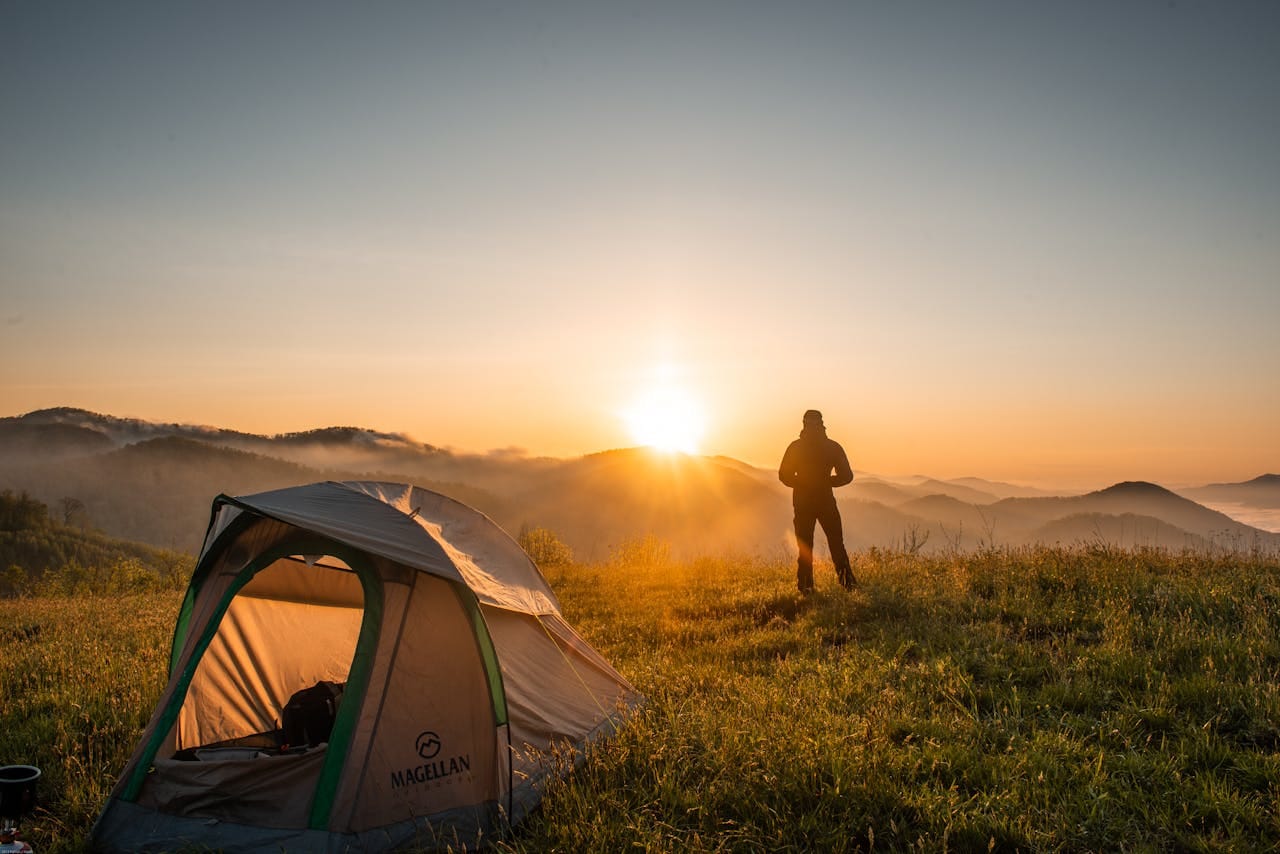Choosing the right tent for your adventure is crucial to ensure comfort, safety, and an enjoyable outdoor experience. The best tent for you depends on factors such as your destination, the weather conditions, the number of occupants, and the type of activity you’re undertaking. Whether you’re planning a casual family camping trip or a rugged backpacking excursion, understanding the key features of a tent will help you make the right choice.
Understanding Your Needs: Key Considerations
1. Purpose and Activity Type
Are you backpacking through the wilderness, car camping with friends, or attending a festival? The purpose of your trip determines what type of tent you need. Backpackers require lightweight, compact tents, while car campers can opt for more spacious models. Festival-goers may prioritize affordability and ease of setup.
2. Seasonality
Tents are categorized into three main types based on the seasons they can handle:
- 3-Season Tents: Designed for spring, summer, and fall, these tents offer a balance of ventilation, weather resistance, and lightweight construction. They’re ideal for moderate weather conditions.
- 4-Season Tents: Built for harsh winter conditions, these tents are heavier, sturdier, and equipped to handle snow and strong winds.
- Convertible Tents: Offering versatility, these tents can adapt to both 3-season and 4-season use.
When planning trips to unpredictable climates, consider a 4-season tent. For guidance on how to stay safe during extreme weather camping, you can refer to Ready.gov’s extreme weather tips.
3. Capacity and Size
Tent capacity ranges from solo shelters to large family tents. Manufacturers typically label tents as “2-person,” “4-person,” etc., but these sizes can be snug. If you value extra room for gear or comfort, consider a tent rated for one more person than your group size.
Pro Tip:
A 2-person tent may be perfect for two backpackers traveling light, but for car camping, a 3-person tent provides added elbow room without sacrificing much convenience.
Features to Look For in a Tent
1. Weight and Portability
For backpacking adventures, weight is a critical factor. Opt for tents made with lightweight materials like aluminum poles and silicone-coated fabrics. Car campers, on the other hand, can afford heavier tents with more features.
2. Weather Resistance
Look for tents with features that protect you from the elements:
- Rainfly: An outer layer that provides waterproofing.
- Sealed Seams: Prevents water from seeping in.
- Wind Resistance: Poles made of durable materials, such as aluminum, improve stability.
The Outdoor Industry Association offers insights into sustainable materials and innovations that enhance weather resistance. Learn more here.
3. Ventilation
Proper airflow is essential to prevent condensation inside the tent. Look for mesh panels, adjustable vents, and double-wall designs for improved breathability.
4. Ease of Setup
For quick assembly, consider tents with color-coded poles, hub systems, or freestanding designs. If you’re a first-time camper, practice setting up your tent at home before heading out.
Choosing the Right Tent for Different Adventures
Backpacking Trips
For solo hikers or small groups, prioritize lightweight tents like the Big Agnes Copper Spur or NEMO Hornet. These models strike a balance between weight, durability, and weather resistance, making them ideal for long treks.
Family Camping
For families or larger groups, spacious models such as the REI Co-op Kingdom or Coleman Sundome offer comfort and ease of use. Look for features like multiple rooms, ample headroom, and storage pockets.
Winter Expeditions
When tackling snowy terrain, you need a tent like the MSR Access or Hilleberg Nammatj. These 4-season tents are built to withstand snow loads and strong winds while keeping you warm.
Common Tent Mistakes to Avoid
- Ignoring the Weather: A 3-season tent won’t protect you in winter storms. Always match your tent to the climate.
- Overloading with Gear: If you’re bringing a lot of equipment, opt for a tent with vestibules or additional storage space.
- Skipping Tent Maintenance: Clean your tent after every trip and ensure it’s stored dry to prevent mildew.
Final Thoughts: Picking Your Perfect Tent
Selecting the right tent involves balancing comfort, protection, and practicality. Assess your adventure’s specific needs, from weather conditions to group size, and prioritize features like weight, durability, and ventilation. By making an informed choice, you’ll ensure your tent becomes a reliable shelter and a cornerstone of unforgettable outdoor experiences.

